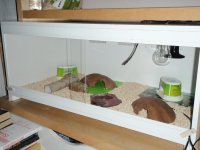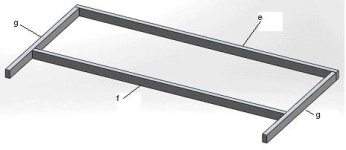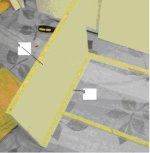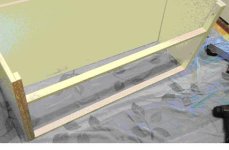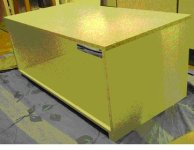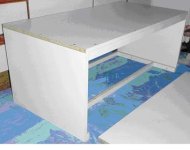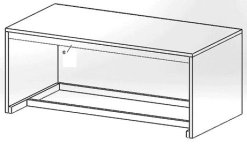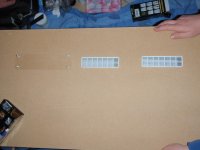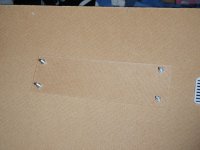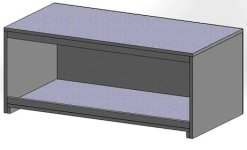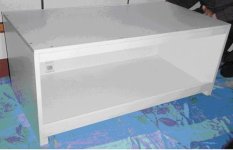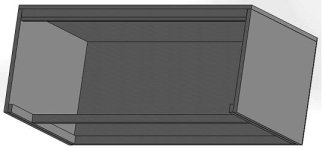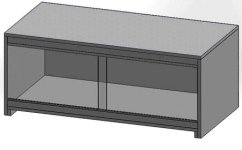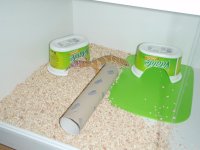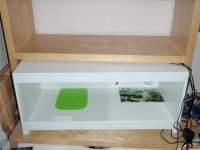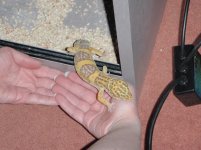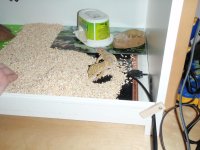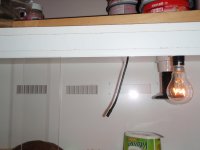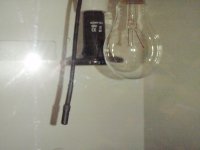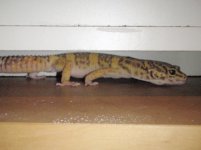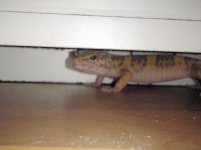The problem – to find a vivarium of maximum size to fit a specific space in a small flat.
The solution – make one!
I've popped a picture of our final viv in so you can see what it looks like.
We wanted a viv to fit in a space 935mm wide by 500 deep by 415 high. Contiboard is available in 457mm, so that was the width board we used, and therefore the depth of the viv. Allowing a little space to slide the viv in, and for cables etc, we decided on 910 wide by 400 high.
To make your own you will need:
Contiboard– cut to size (how to calculate sizes shown below)
Faced hardboard for the back
Track for the doors
Doors of glass or acrylic (we recommend you measure these when the viv is assembled)
Two small pieces of plywood, or hard wood, as catches
Screws
PVA wood glue
Glue to fit track
Water-based varnish, or iron-on edging strip to seal cut ends of Contiboard
Panel pins
Drill
Screwdriver
Try square
Pin hammer
All appropriate heat mats, CHEs/Lights, hides for your gecko and fittings
The solution – make one!
I've popped a picture of our final viv in so you can see what it looks like.
We wanted a viv to fit in a space 935mm wide by 500 deep by 415 high. Contiboard is available in 457mm, so that was the width board we used, and therefore the depth of the viv. Allowing a little space to slide the viv in, and for cables etc, we decided on 910 wide by 400 high.
To make your own you will need:
Contiboard– cut to size (how to calculate sizes shown below)
Faced hardboard for the back
Track for the doors
Doors of glass or acrylic (we recommend you measure these when the viv is assembled)
Two small pieces of plywood, or hard wood, as catches
Screws
PVA wood glue
Glue to fit track
Water-based varnish, or iron-on edging strip to seal cut ends of Contiboard
Panel pins
Drill
Screwdriver
Try square
Pin hammer
All appropriate heat mats, CHEs/Lights, hides for your gecko and fittings
Attachments
Last edited:


